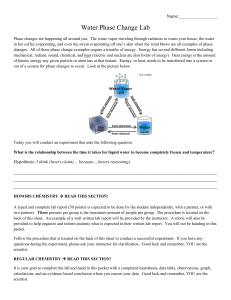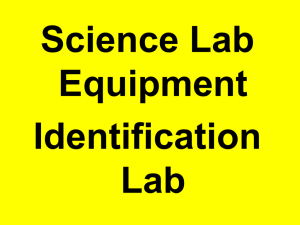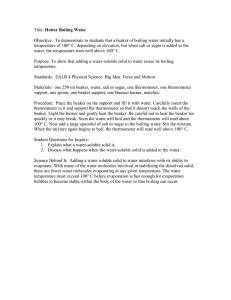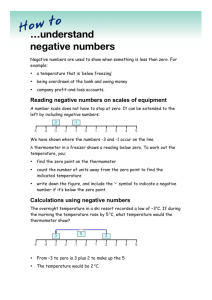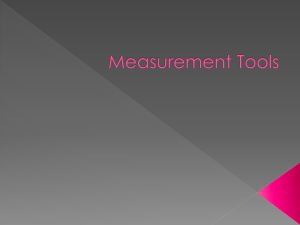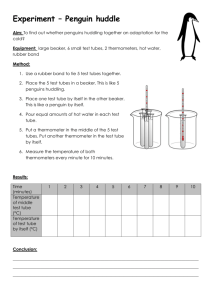Determination of the Energy of Solution
advertisement
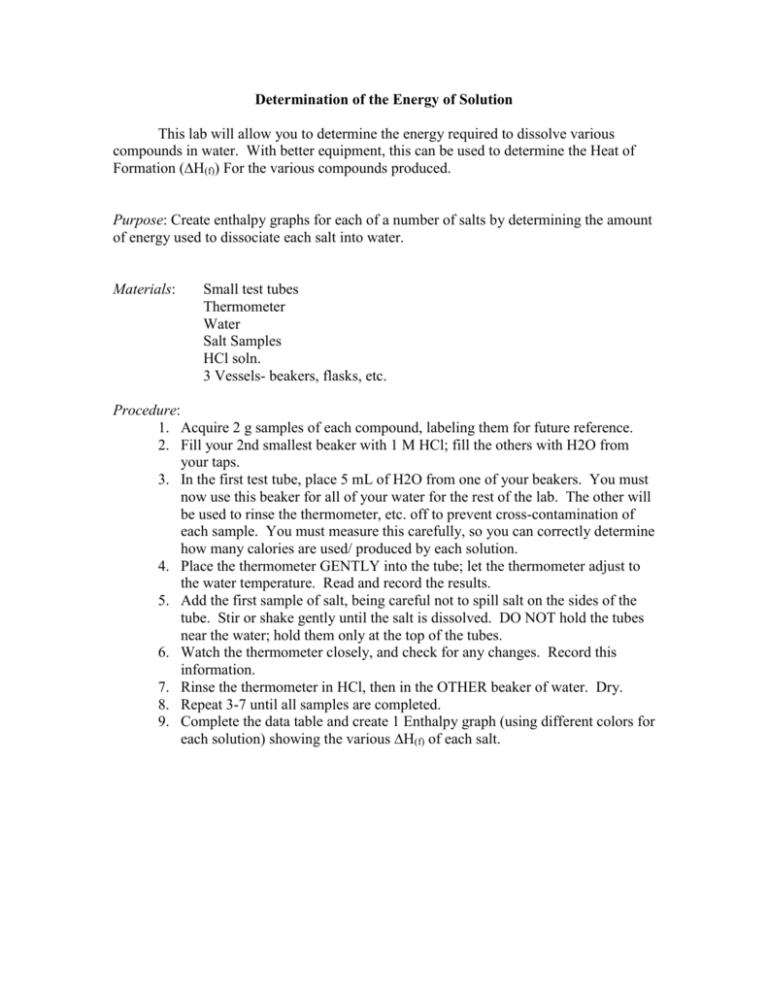
Determination of the Energy of Solution This lab will allow you to determine the energy required to dissolve various compounds in water. With better equipment, this can be used to determine the Heat of Formation (∆H(f)) For the various compounds produced. Purpose: Create enthalpy graphs for each of a number of salts by determining the amount of energy used to dissociate each salt into water. Materials: Small test tubes Thermometer Water Salt Samples HCl soln. 3 Vessels- beakers, flasks, etc. Procedure: 1. Acquire 2 g samples of each compound, labeling them for future reference. 2. Fill your 2nd smallest beaker with 1 M HCl; fill the others with H2O from your taps. 3. In the first test tube, place 5 mL of H2O from one of your beakers. You must now use this beaker for all of your water for the rest of the lab. The other will be used to rinse the thermometer, etc. off to prevent cross-contamination of each sample. You must measure this carefully, so you can correctly determine how many calories are used/ produced by each solution. 4. Place the thermometer GENTLY into the tube; let the thermometer adjust to the water temperature. Read and record the results. 5. Add the first sample of salt, being careful not to spill salt on the sides of the tube. Stir or shake gently until the salt is dissolved. DO NOT hold the tubes near the water; hold them only at the top of the tubes. 6. Watch the thermometer closely, and check for any changes. Record this information. 7. Rinse the thermometer in HCl, then in the OTHER beaker of water. Dry. 8. Repeat 3-7 until all samples are completed. 9. Complete the data table and create 1 Enthalpy graph (using different colors for each solution) showing the various ∆H(f) of each salt.
